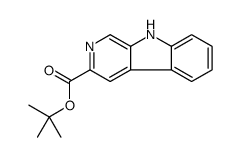The role of α1 and α5 subunit-containing GABAA receptors in motor impairment induced by benzodiazepines in rats.
Marija Milić, Jovana Divljaković, Sundari Rallapalli, Michael L van Linn, Tamara Timić, James M Cook, Miroslav M Savić
Index: Behav. Pharmacol. 23(2) , 191-7, (2012)
Full Text: HTML
Abstract
Benzodiazepines negatively affect motor coordination and balance and produce myorelaxation. The aim of the present study was to examine the extent to which populations of γ-aminobutyric acid A (GABAA) receptors containing α1 and α5 subunits contribute to these motor-impairing effects in rats. We used the nonselective agonist diazepam and the α1-selective agonist zolpidem, as well as nonselective, α1-subunit and α5-subunit-selective antagonists flumazenil, βCCt, and XLi093, respectively. Ataxia and muscle relaxation were assessed by rotarod and grip strength tests performed 20 min after intraperitoneal treatment. Diazepam (2 mg/kg) induced significant ataxia and muscle relaxation, which were completely prevented by pretreatment with flumazenil (10 mg/kg) and βCCt (20 mg/kg). XLi093 antagonized the myorelaxant, but not the ataxic actions of diazepam. All three doses of zolpidem (1, 2, and 5 mg/kg) produced ataxia, but only the highest dose (5 mg/kg) significantly decreased the grip strength. These effects of zolpidem were reversed by βCCt at doses of 5 and 10 mg/kg, respectively. The present study demonstrates that α1 GABAA receptors mediate ataxia and indirectly contribute to myorelaxation in rats, whereas α5 GABAA receptors contribute significantly, although not dominantly, to muscle relaxation but not ataxia.
Related Compounds
| Structure | Name/CAS No. | Molecular Formula | Articles |
|---|---|---|---|
 |
tert-butyl beta-carboline-3-carboxylate
CAS:93835-05-3 |
C16H16N2O2 |
|
βCCT, an antagonist selective for α(1)GABA(A) receptors, rev...
2013-02-01 [Brain Res. Bull. 91 , 1-7, (2013)] |
|
Apparent pA2 values of benzodiazepine antagonists and partia...
1999-09-01 [J. Pharmacol. Exp. Ther. 290(3) , 1222-9, (1999)] |
|
Cognition-impairing effects of benzodiazepine-type drugs: ro...
2013-03-01 [Pharmacol. Biochem. Behav. 104 , 62-8, (2013)] |
|
Bidirectional effects of benzodiazepine binding site ligands...
2005-07-01 [Psychopharmacology 180(3) , 455-65, (2005)] |
|
Discriminative stimulus effects of L-838,417 (7-tert-butyl-3...
2010-02-01 [Neuropharmacology 58(2) , 357-64, (2010)] |